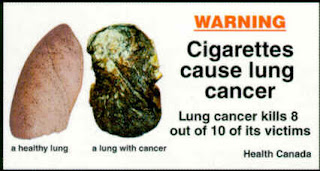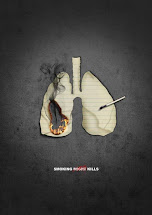In stop smoking it is necessary to address the root causes that lead to the active smoker practice this bad habit. They are identified and defined as:
-- psychological dependence: The active smoker was conditioned to respond to external stimuli, smoking unwittingly, impulsive and unthinkingly. Notice how many cigarettes are smoked by impulse, without having the will.
-- addiction: Causes the active smoker smokes to relieve the effects of the symptoms of nicotine withdrawal. To reset it in the blood, he smokes.
-- unwillingness to face the addiction: The will is weakened by the frustrations the active smoker surrender to the addiction. He is smoking one, two, three packs a day. He finds it impossible to stop smoking. This will be recovered by promoting their self-esteem and envisioning a better future built by himself, and by improving their quality of life, every moment.
This method of quit smoking teaches the active smoker to work these cases, mentally and psychologically, giving you all the conditions to confront their addiction.
We developed therefore a personal action plan, for twelve months in order to meet the following goals, implementing changes arising from new mindset in the face of smoking, the smoker will get active.
Objectives:
1) Information and study for its awareness about addiction, to know why he should stop smoking, thereby strengthening their desire to leave this addiction;
2) By psychological preparation and through self, Undo the mental and psychological habit of smoking, building a new mindset;
3) By the method reduce, slowly and gradually, cigarettes smoked;
4) Taking the final decision: Stop smoking.
The flexibility of this plan is due to the need to align it with the knowledge to be acquired in order to relieve anxiety, intense and growing, and other symptoms of the crisis leads to withdrawal, because of the absence of nicotine.
This situation is caused by the new mindset and organic to reduce cigarette smoking, to leave them, definitely.
The greatest weapon to do that is your will power, his insight and his free will, which should be worked out, consciously and unconsciously, in order to condition them a new mindset in the face of their addiction and psychological.
This new position will allow you to gain control and mastery over the desire to smoke each cigarette, and relieve you of the complex dependency that makes smoking, eating and mechanically, without realizing it. This thoughtless impulse characterizes the absence of a committed, confident, directed, lucid and conscious in order to control the addiction.
So, wanting to quit smoking and failing, you will live as close to a war against the cigarette that dominates, for a way to get rid of it, to quit, and it torments him. Is not how you live today?
With the awareness gained by the new mindset, your insight and your free will, will inhibit this impulse, driving their desire for control over the addiction to abandon it altogether.
The new mindset is that of a peace truce with the cigarette, to meet him in detail and make it a nice product to be consumed, then get rid of him, beat him.
Make a cigarette, even if it makes a delicious fruit to be savored: Sit your perfume, fix on its color and beauty, to then give you a bite, delight, feeling the flavor.
When will you give up smoking, avoid the mechanical movement and automatic lead hands to hammer to remove the cigarette. Instead of taking it to his mouth, as you would a fruit: look him and feel her "perfume" smelling it; search feel it between fingers and realize to dominate or whether it is you who dominates.
Take a test: assuming that you master it, do not smoke. Put him back at the pack and wait. The next time you feel like smoking, repeat this act, and so on, until no more smoke, never again.
However, if you discover that the cigarette is who will dominate, accepted it is subject, realize the degree of dependence and smoke it, Looking to buy right now (every puff tasted) the consciousness that is dominated by a single cigarette and to decide the importance of freedom from addiction, to stop smoking.
This way of observing, will exercise its attention to realize smoking and exercise in the future, an area about it, through which you will smoke only when really in the mood to do so.
This small and important mindset is to begin the conquest of self-control.
With this measure, the psychological burden of being an active smoker, will be lighter because you will have strengthened the conviction that, after a scheduled time, you will get rid of the addiction that overwhelms.
It is important to enlist the help of others linked to you, that will help you monitor it, slap him and walk when faltering in their goals.



